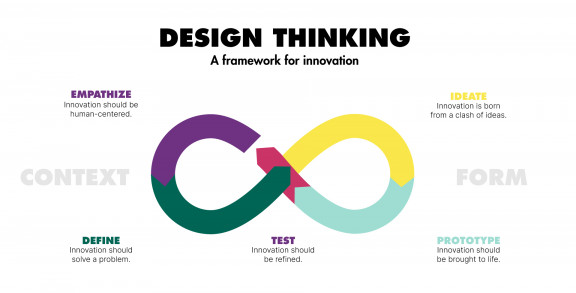
Digital experience design
Our strategy is built on the Design Thinking process. This approach tries to frequently improve user interface design. What is our user-experience (UX) strategy? Focusing on users to discover challenges they come across, determining the goals that need to be met for our clients, and co-developing the service's web design.
5 Key methods
Design Thinking is applied by the consultants at our UX and UI (User Interface) Design firms using methods tailored to each client's threats and digital marketing plan.
Experience map & persona
We concentrate the information gathered about your target audience into a persona (typical user profile) or buyer persona (ideal buyer profile) and make their experience map. This mapping method keeps note of everything the user does, thinks, and feels in order to figure out why the user experience is good or bad at each stage.
User testing
User testing is a method of putting an IT product, design, or prototype to the test by putting it in front of real people. It's the most effective technique for detecting ergonomic issues, increasing product effectiveness, and raising conversion rates.
The design sprint solution, which is managed by specialists, aims to accelerate the design process. In five days, a team progresses from defining the problem to testing a prototype. We've taken Google's method and tweaked it to fit your needs and expectations.
A design system is a process as well as a tool. The strategy entails tackling the many components of an interface in a modular, step-by-step process (through atomic design for example). This way, every component - from the tiniest to the most essential, is designed and developed with the goal of widespread use across your whole digital ecosystem.
Result? You'll have a well-documented tool that can be used by many individuals. It allows for more consistent and high-quality user interfaces and experiences, as well as reusable technical code.
We simulate how your future service would work, and test it before starting technical production by creating a functional prototype or UX design prototype. Our UX Researchers give you a summary of their findings so that you can put the results of the testing to good use and improve your service.
Our 3 areas of expertise
Observations, interviews, focus groups, style guides, wireframes, user flows, material design, workshop facilitation, audits, graphic design... All of these Design Thinking methods are separated into three areas of competence by our UX/UI Design specialists.
User research comprises all the tools for evaluating customer behavior and needs that are currently available. Interviews, focus groups, user testing (including guerilla testing), analytics, and other kinds of research are used to collect data, which is then analyzed and summarized in the form of personas, an experience map, or a customer journey, for example.
When available, the results of user research will be used by the consultants at our UX Design agencies to design the interface and guarantee that its ergonomics and usability are optimal. They are in charge of the interface's usability, attractiveness, and efficacy.
Our UI Designers, in charge of the interface's graphic design, will outline how your brand will be communicated aesthetically and ergonomically according to your specifications (and user expectations).
We’re 100% committed to improving the user experience in a wide range of areas: B2B, B2C, B2E - from e-commerce sites to extranets or specialist applications, ... Check out our case studies on projects for clients in the industrial, retail, luxury, and energy industries and get in touch!
Want this for your brand?
Send us an emailTake a look at what we've done

